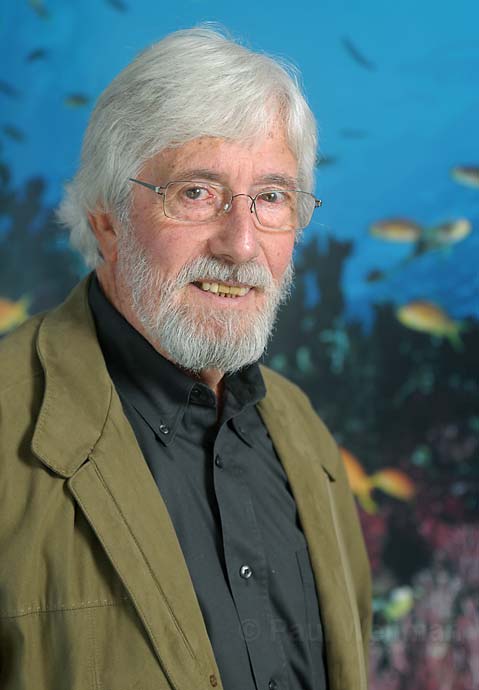Cousteau Praises Bush’s Marine Monuments
Saving the Sea

When environmentalists are able to work with a conservative president, miracles can happen. Case in point: President George W. Bush endorsed the largest-ever marine conservation effort when he announced on January 6 the formal protection of nearly 200,000 square miles of the Pacific Ocean in three national marine monuments.
This designation under the 1906 Antiquities Act, which past presidents have used to preserve historic sites on land, calls for the immediate phaseout of oil and gas extraction, commercial fishing, and waste dumping in the specified areas. Jean-Michel Cousteau, founder of the Santa Barbara-based Ocean Futures Society, was invited by Bush to the declaration, but Cousteau, son of sea explorer Jacques Cousteau, was no passive bystander. His relationship with Bush had begun years earlier and helped spark the administration’s interest in protecting the marine environment. Were it not for staff at Ocean Futures Society and other organizations, these “three beautiful and biologically diverse areas of the Pacific Ocean,” as Bush called the monuments, may never have been preserved.
In an interview this week, Cousteau recalled the process that led to the newest marine conservation baby and how its older sibling-the Northwestern Hawaiian Islands National Monuments-was born in 2006.
“It started back in 2005. It was my dream for many years to go to the northwestern Hawaiian Islands. I wanted to explore there. I guess I got that from my dad,” Cousteau said. “So we went there and were blown away by the diversity of life. But, in addition, on all of those remote islands was junk : All types of trash, plastic, metal, glass-you name it.” Cousteau said he and his team saw how the man-made flotsam was killing the ecosystem. An accompanying film crew turned the footage from the trip into the PBS feature Voyage to Kure, whose title refers to the last island in the chain.
Thus began the campaign. Cousteau eventually connected with James Connaughton-the White House Council chair on Environmental Quality and an avid diver. Connaughton organized an April 2005 trip for government officials to see the islands, with Cousteau as their guide. “Everyone got together and stopped fighting,” Cousteau recalled. Bush then invited Cousteau to hold a White House screening of the Voyage to Kure. Cousteau recalled that after the film, “President Bush looked at all of us and said-[and] I am quoting-‘Let’s get it done.’ : I had no idea what that meant, but I said ‘Okay, great.'” In June 2006, Bush officially declared the 138,000 square miles of ocean surrounding the northwestern Hawaiian Islands a national monument.
And so the road was paved for naming more marine national monuments. Cousteau’s Ocean Futures Society and other conservation organizations formed a list of critical sites. Cousteau lobbied for including the Northern Mariana Islands, beneath which lurks the Mariana Trench-an ocean valley deeper than Mt. Everest is tall. He claims the area’s historical and geological significance isn’t fully understood, noting that nobody has plumbed its depths since explorers last surveyed its base in 1960.
The three recently announced monuments house thousands of marine species, including sharks, whales, sea birds, and vast swaths of intact coral reef. The first monument encompasses the Northern Mariana Islands and the Mariana Trench, the second consists of seven uninhabited equatorial islands, and the third surrounds Rose Atoll, which is fringed by unique pink corals. These areas include the stuff of sci-fi movies, including a bird that incubates its eggs in heat from underwater volcanoes and a sulfur pool very like one on Jupiter’s moon Io.
While environmentalists worldwide applaud the protection of these spots, many voice skepticism. Chris Flavin, director of the Worldwatch Institute, maintained the Bush presidency has been a “dark period for environmental issues.” However, Cousteau opined otherwise: “People can say what they want about the Bush administration, but I know from personal experience that over the last eight years, we actually had someone at the White House listening when it came to the ocean.”



